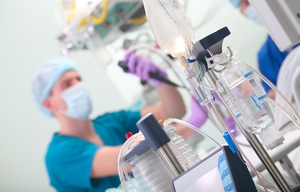Bronchoscopy

Bronchoscopy is a minimally invasive procedure that allows your doctor to view your airways through a thin, lighted tube (bronchoscope).
It is used in the diagnosis and treatment of lung conditions, including cancer and asthma.
The bronchoscope is inserted through the nose or mouth, then moved down the throat into the airways. A flexible or rigid bronchoscope may be used.
Types of Bronchoscopy
A flexible bronchoscope is most common. It can be used to explore smaller airways (bronchioles).
The flexible scope also may be used to insert a breathing tube, take tissue samples for a biopsy and move medicine into the lungs.
A rigid bronchoscope is a straight tube used only in the larger airways (bronchi).
Bronchoscopy as a Treatment
Bronchoscopy may be performed to diagnose and treat tumors and infections, remove blockages of the airways, collect tissue and fluid samples, or to assist breathing with stent placement.
Common bronchoscopy procedures include:
- Bronchial thermoplasty
- Endobronchial bronchoscopy (EBUS)
- Electromagnetic navigational bronchoscopy
- Thoracentesis
- Chest tube insertion
What to Expect
If you have a bronchoscopy, you will be given sedatives. General anesthesia might be required.
Oxygen will be administered through a mask or nasal tube.
If you have the procedure as an outpatient, you will need to arrange for someone to drive you home.